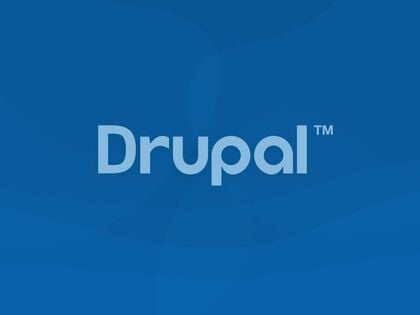Drupal to WordPress Migration - 8 Key Considerations

If you're sitting on Drupal 6/7, chances are you've thought about upgrading, either to the latest version of Drupal or something like WordPress. Perhaps because you’re running into errors or perhaps required modules are no longer supported. There are a lot of reasons why organizations wait to upgrade. It can be budgetary constraints, lack of CMS knowledge, or technical complexity.
Should You Upgrade? If So, Drupal or WordPress?
Should you upgrade? The short answer is: yes. At some point, you will be forced to upgrade due to a lack of support and security releases for the old Drupal version, or simply because the website is too dysfunctional to move the needle for your organization. While there are paid long-term-support plans, they are simply prolonging the problem, not to mention that you could be investing those funds in a new site.
Drupal
As Drupal 9 is currently the most stable version of Drupal, many of the major modules have been updated to work on D9. It’s also worth noting that many D7 modules are no longer being maintained because of the release of D8 and now D9. Upgrading from Drupal 7 to Drupal 9 usually requires a full rebuild of the site, so it's reasonable that some organizations are considering other options such as WordPress.
WordPress
WordPress can do many of the things that Drupal can, with a wide variety of templated themes, plugins, and sometimes better ease of use but at the cost of being more suited for less-complex websites. Read our article linked below on making the decision between both platforms to figure out which one is right for you.
Drupal vs WordPress: Which CMS Is Best to Upgrade To?
Template & Modules
A few things to consider before migrating. Is your site a custom design or an out of the box template? Chances are you’ll need a complete redesign. Now is a great opportunity to take what you have learned from your website and its users, and implement it in a fresh way.
For more clarity and direction, you can perform some market research and identify the best parts of other industry websites. There’s a variety of options available and the direction you take will depend on your individual situation. The good news is, there is something for everyone!
What about modules? You may have added modules in order to make your site function the way you want it to, so be sure those required modules are also available in D8. If not, perhaps spend some time researching modules with similar functionality, or hire a developer to build that functionality and custom module to your exact needs.
Drupal 9 has the mobile-first responsive baked in, thanks to the Mobile Initiative. You get a CMS that is mobile-friendly out of the box. This saves significant time in designing and delivering a responsive design. With Twig as the simpler and more secure templating language, it is easier to theme for Drupal 9.
If moving to WordPress, you have numerous options of free and commercial themes available.
The Content Migration
Because D6 and D7 are losing favor in support of Drupal 8, we recommend using the migration module. It’s flexible enough to perform many different types of migrations, including exports from D7, WordPress, XML, and CSV, as well as imports into D9. That being said, migrating content comes with a tremendous amount of different challenges. Content duplication, incorrect placement, and custom modules that were used to organize content can be particularly problematic.
Media Migration
Drupal 8.5 introduced the complete Media entity into core. Prior to that, only the file entity was available. With media as your main library, you can manage and reuse media with a vast variety of media types, from normal images and documents to audio, video, remote media, and social media streams (Facebook, Twitter, and Instagram feeds).
With Drupal 9's mobile-first approach, support for responsive image and media displays is great. Media output, which is fit and optimized for different screen sizes, improves page load time, and user experience.
Migrating this external media is generally a 2-step process. First, you will need to migrate the physical file and file metadata, then you will need to map the entity to the referenced media. Now is a good time to clean up and evaluate obsolete files, optimizing the file size through compression and optimization.
Aside from external files accessed by Drupal, a slightly tricky area and something to keep an eye on is the images hosted within WYSIWYG text content. These would preferably be migrated into Media to take advantage of reuse and management.
Want a Free Drupal 7 EOL Upgrade Audit?
SEO Migration
Migrating SEO content is just as important as migrating actual content. This includes content such as meta values, images or hyperlinks. SEO traffic can be a big deal when migrating content, so you’ll want to make sure that the search engines not only see the content, but also bring over the SEO tags where search engines have previously been indexing. A word of caution: if not done programmatically, the results can lead to a very negative impact on SEO rankings.
Tyler Explains Our Migration Process Using Drupal as an Example
Costs & Budget
Deciding to migrate can be expensive. My guess is that your organization has spent a significant amount of time and money developing on D6 or D7. Migrating into D8 requires you to essentially start from scratch, so it’s best to take this time to think about your overall business objectives, direction, and/or possible rebrand. Moving to D8 should future-proof your site from a complete rebuild, meaning that when D9 is released, upgrading should be as easy as pushing a button.
Along these lines of direction, ask yourself: do you even want to stay with Drupal? We typically recommend higher ed, government, and technically complex projects (where custom workflows can be better implemented) make use of Drupal’s robust architecture. With that, a lot of our smaller to midsize companies are moving off of Drupal and migrating into WordPress.
The most common reason we're seeing some clients switch over to WordPress is because the admin/backend interface is clean and easy to use, especially for editors with little or no technical background or previous WP experience. It really depends on your background.
If you're familiar with Drupal and you’re not experiencing a whole lot of complications or frustration, stick with Drupal. If your team has more familiarity with WordPress, move to WordPress. Migration costs are relatively the same, although with Drupal you might have an additional cost with a custom theme design versus something off the shelf.
Timelines and the Future
Drupal 9 was released in 2020 as part of the continual shift in the Drupal release cycles. The ‘end of life’ on Drupal 8 will be November of 2021. To put this in layman's terms: anyone looking to stay on Drupal should upgrade by then (and I would advise doing so even sooner).
If you’re already on Drupal 8, upgrading will be very easy. Drupal 9 will simply be the latest version of Drupal 8, so consider it more of a continuation of version 8. There will be backward compatibility, breaking of APIs, but as long as the modules and theme stay up-to-date, we shouldn't expect any downtime.
All this being said... What's the big deal about D9? That’s just it. It’s not a big deal. The best way to keep up and get ready for Drupal 9 is to stay current or upgrade to Drupal 8. When D9 does eventually roll out in the summer of 2021, it should be as easy as a one-click update.
Choosing the Right Partner
Here’s the bottom line. If you have a current D7 site that was properly developed without modification (or without any problems), you don't need to upgrade right away, but it is an eventuality that you may want to start discussing with a potential partner to help you perform the upgrade, and to weigh your options among different platforms. The end of official D7 support is in 2021, so the time is now to start thinking about your migration plans.
This blog post was co-written by Brian Michaelis, Chin Kiong Ng (CK), and David Fine.

